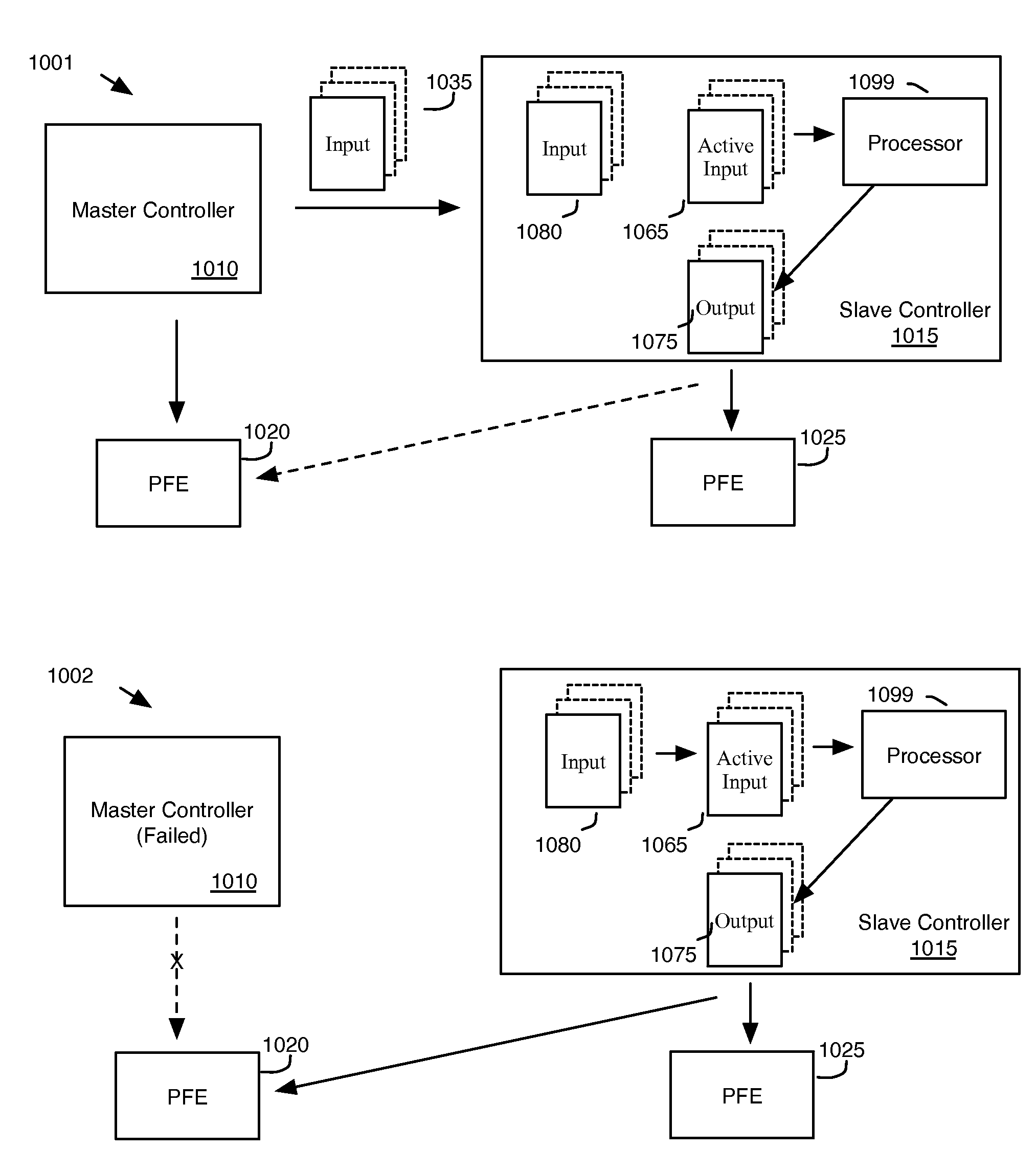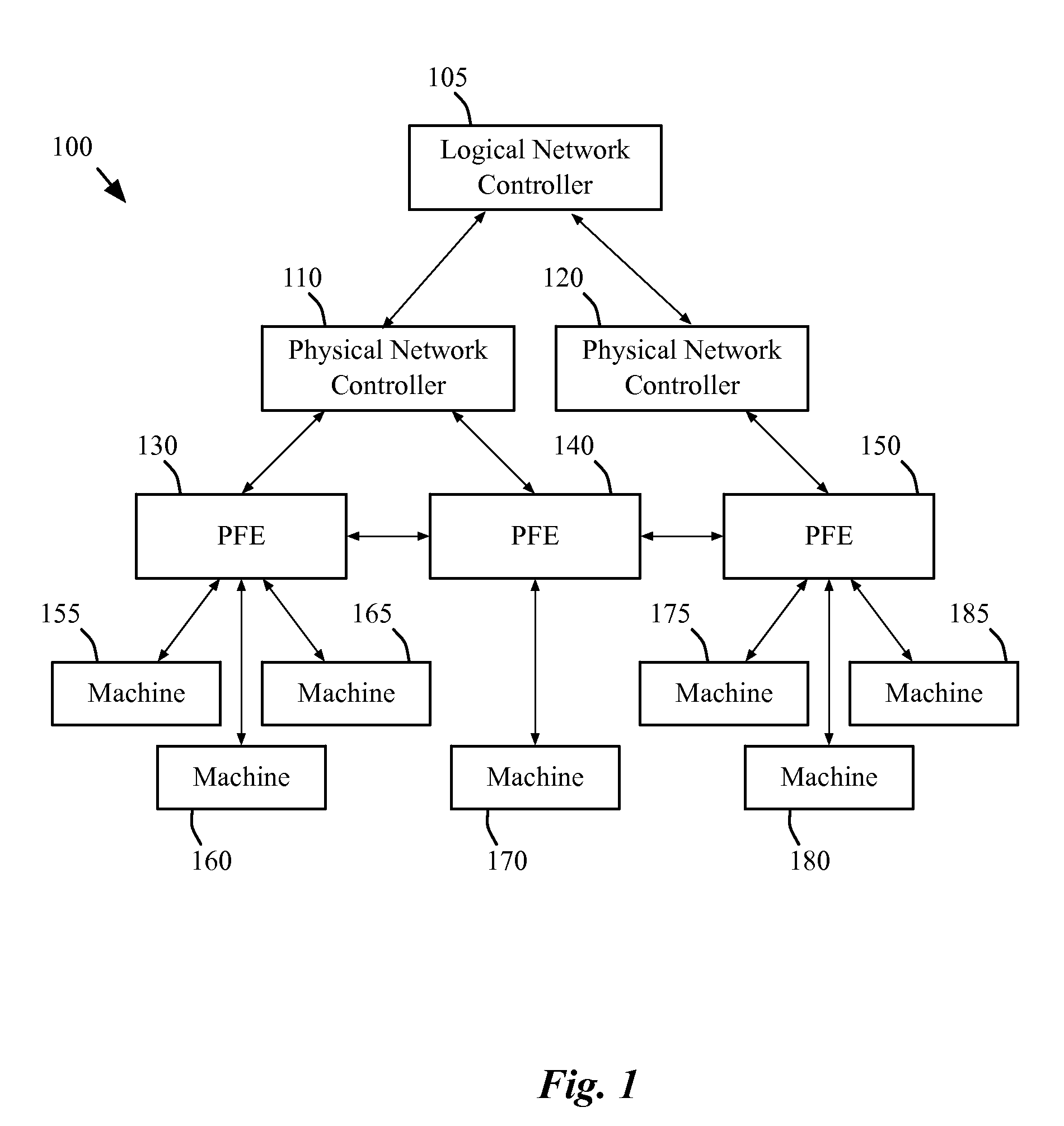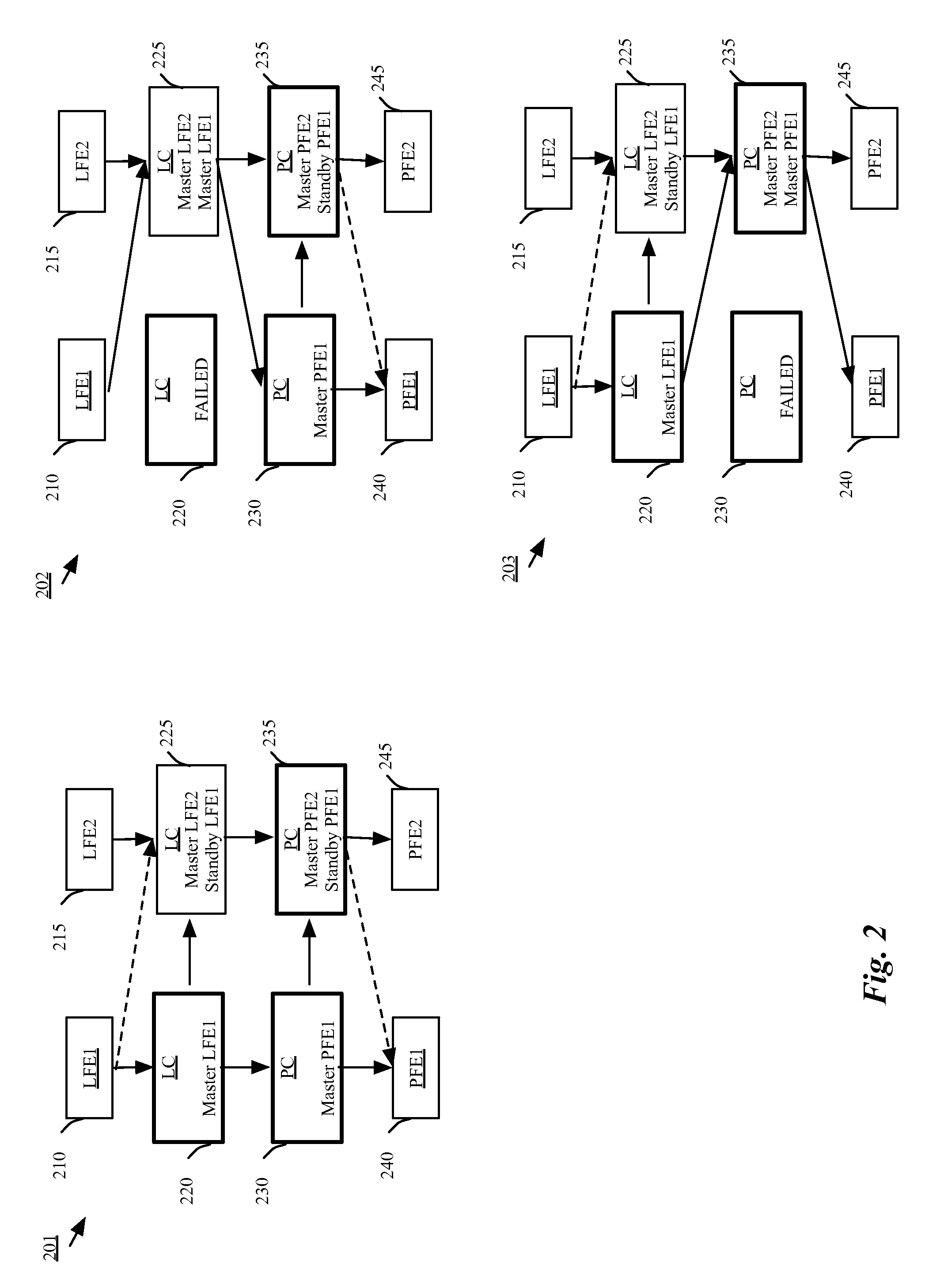Unified replication mechanism for fault-tolerance of state
a replication mechanism and fault tolerance technology, applied in fault response, data switching networks, instruments, etc., can solve the problems of controller failure, backup controller failure, controller failure, etc., to reduce downtime, reduce downtime, and affect the availability of forwarding state computation.
- Summary
- Abstract
- Description
- Claims
- Application Information
AI Technical Summary
Benefits of technology
Problems solved by technology
Method used
Image
Examples
Embodiment Construction
[0028]In the following detailed description of the invention, numerous details, examples, and embodiments of the invention are set forth and described. However, it will be clear and apparent to one skilled in the art that the invention is not limited to the embodiments set forth and that the invention may be practiced without some of the specific details and examples discussed.
[0029]Some embodiments of the invention provide a model for the network controllers (also referred to as network controller instances or controllers) in which the controllers are implemented as a distributed database across a controller cluster. Controllers (or controller nodes) in the controller cluster manage the processing of packets by a set of forwarding elements (e.g., switches, routers, etc.) in a network control system. The forwarding elements manage the sending of packets between various physical and virtual elements (e.g., virtual machines (VMs), physical computing devices, etc.). The controller node...
PUM
 Login to View More
Login to View More Abstract
Description
Claims
Application Information
 Login to View More
Login to View More - R&D
- Intellectual Property
- Life Sciences
- Materials
- Tech Scout
- Unparalleled Data Quality
- Higher Quality Content
- 60% Fewer Hallucinations
Browse by: Latest US Patents, China's latest patents, Technical Efficacy Thesaurus, Application Domain, Technology Topic, Popular Technical Reports.
© 2025 PatSnap. All rights reserved.Legal|Privacy policy|Modern Slavery Act Transparency Statement|Sitemap|About US| Contact US: help@patsnap.com



